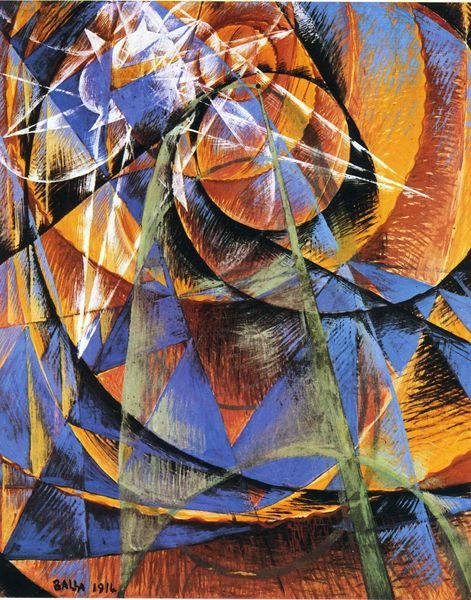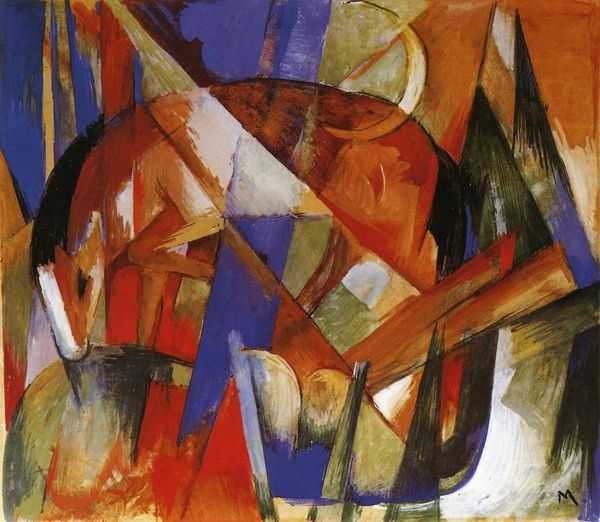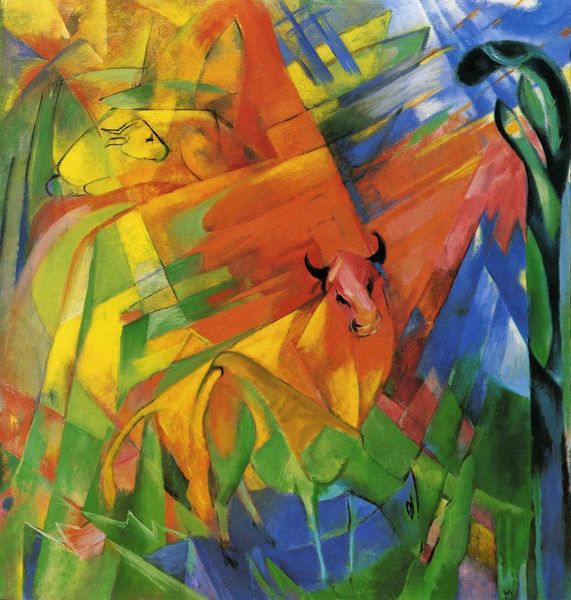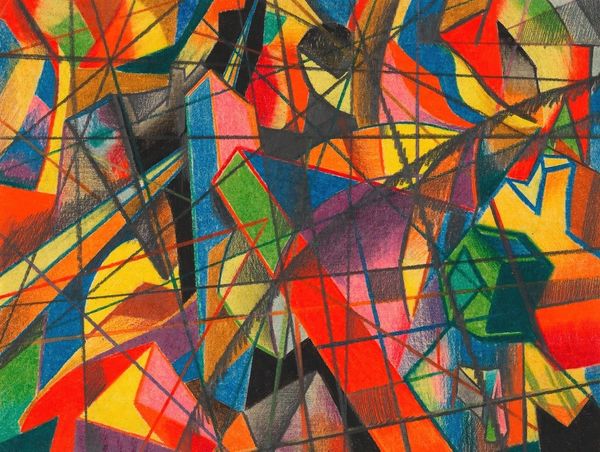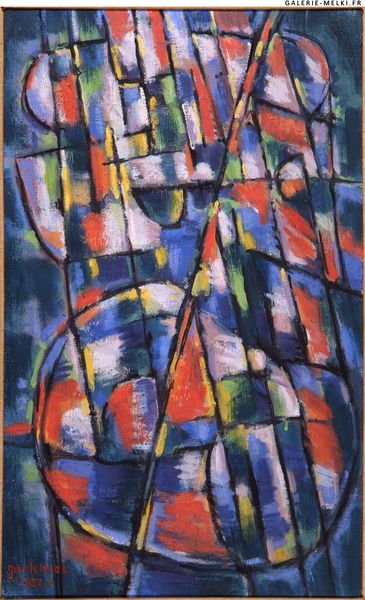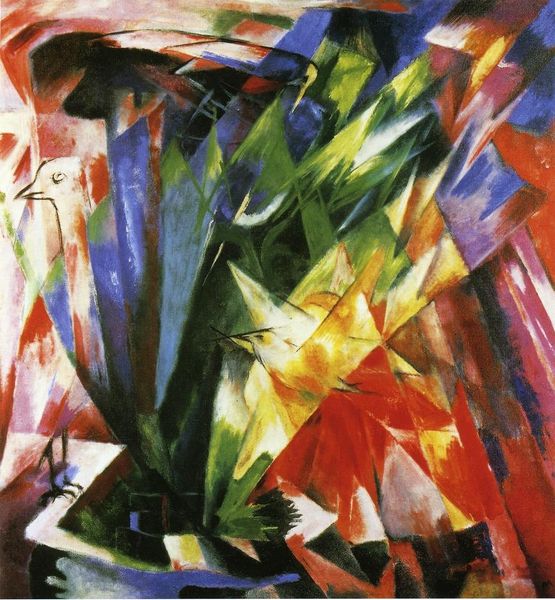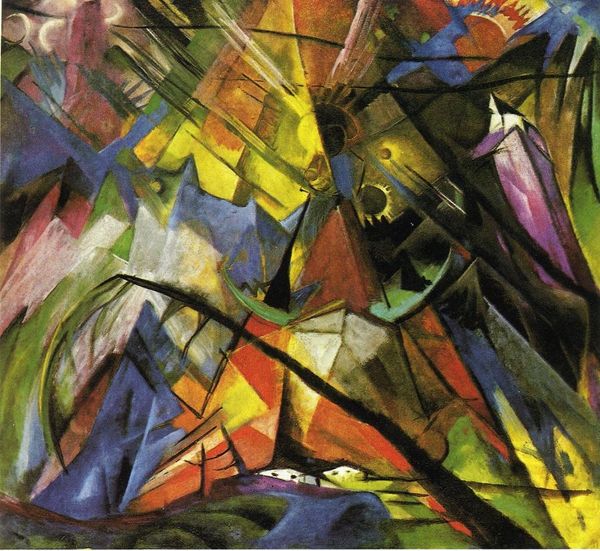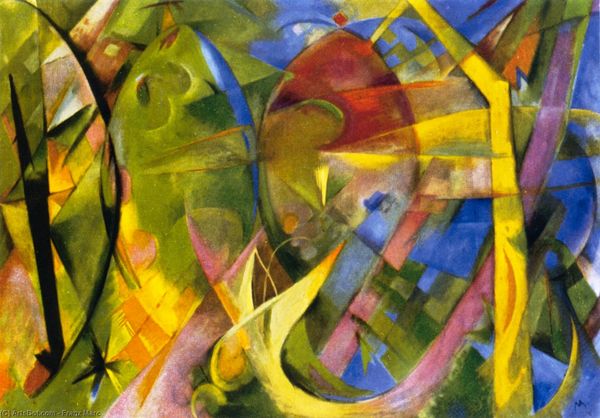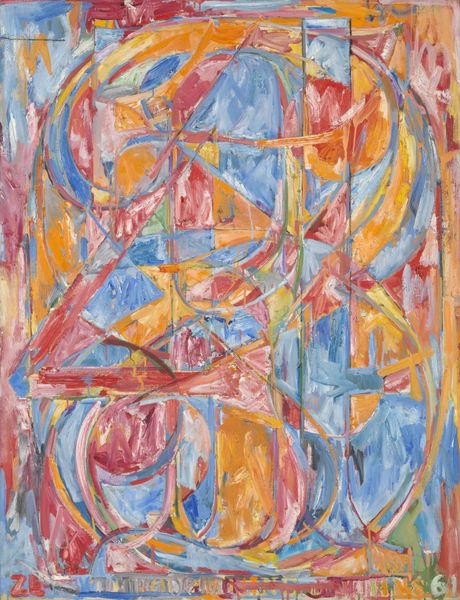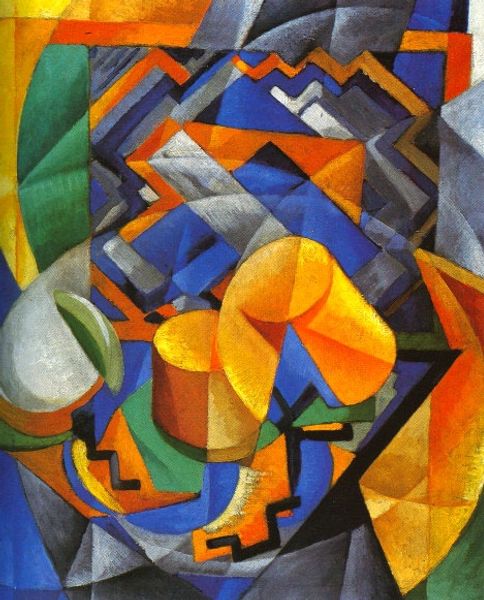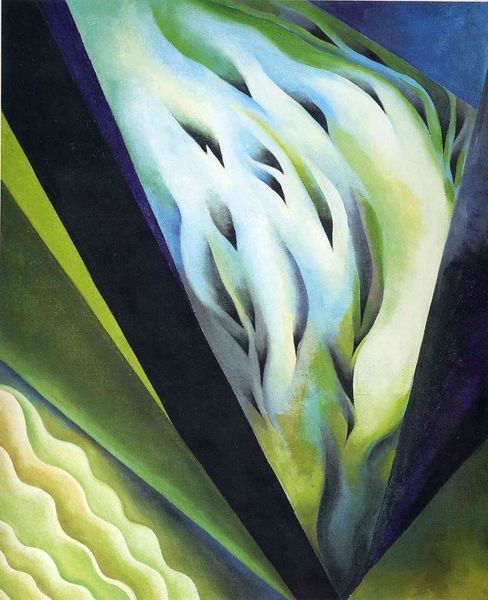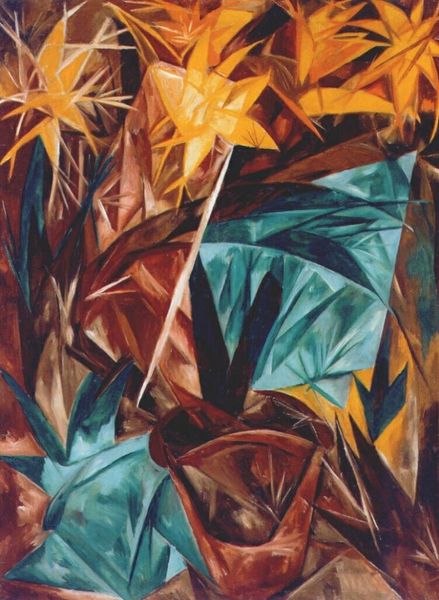
painting, oil-paint
#
painting
#
oil-paint
#
form
#
geometric-abstraction
#
abstraction
#
line
#
abstract art
#
orange
#
futurism
Copyright: Public domain US
Editor: This painting, "Planet Mercury Passing in Front of the Sun," was created by Giacomo Balla in 1914, using oil paint. It's such a vibrant explosion of color and lines; the texture looks really dynamic. What can you tell me about this work? Curator: The Futurists were obsessed with speed, technology, and the dynamism of the modern world, weren’t they? Think about the materials used. Oil paint allowed for blending and layering, crucial for capturing the sense of movement they sought. How do you think the *application* of the paint contributes to that feeling of speed? Editor: The brushstrokes! They’re so deliberate, like capturing fleeting moments in time, rather than traditional still life. Were there particular manufacturing advances in pigments or brushes available at that time, that might have been key to Balla’s ability to make this image? Curator: Precisely! The early 20th century saw advancements in pre-mixed paints and more standardized brush production, which afforded artists greater control and ease. Think about the socio-economic implications of these advancements—the labor involved in creating these materials. It shifts from workshop practice to something streamlined by production. What statements are Futurists making by utilizing, in a work supposedly about natural events, materials of industrialized production? Editor: I guess it shows how completely intertwined their vision of the future was with technology and industry. They weren't just depicting speed; they were embracing the entire mechanized process. Curator: Exactly! Balla’s choice and application of materials, against the backdrop of burgeoning industry, underlines the core of Futurism: celebrating the machine age, even through their materials themselves. Editor: I've never thought about it that way. Looking at the materials and the making of this painting gives a much clearer picture of its historical context. Curator: Indeed! By looking at the process, materiality, and social context of artwork production, we deepen our understanding of not just the artwork itself but the complex interplay between art, industry, and societal change.
Comments
No comments
Be the first to comment and join the conversation on the ultimate creative platform.
